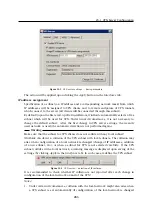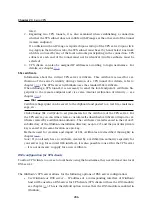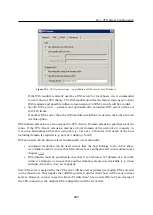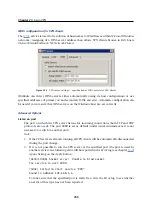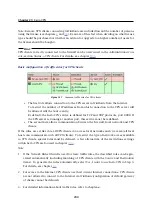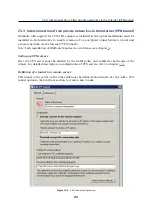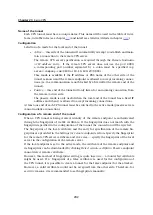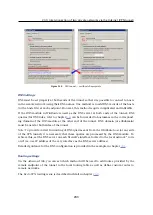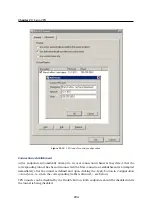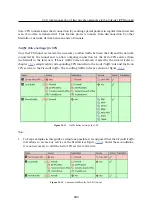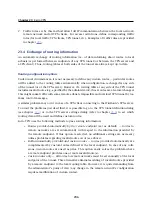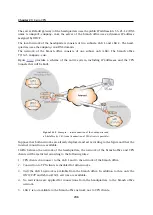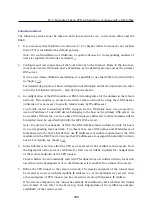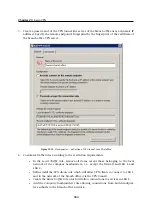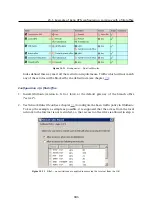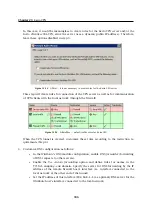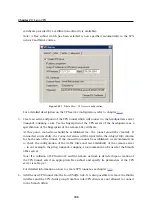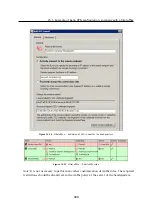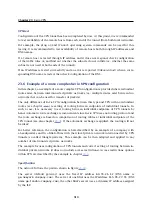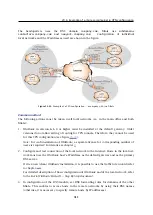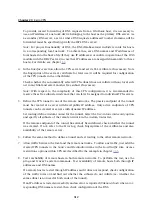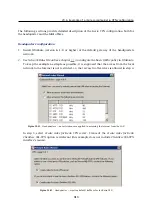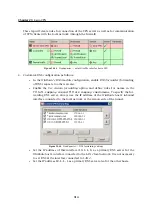
23.5 Example of Kerio VPN configuration: company with a filial office
299
Common method
The following actions must be taken in both local networks (i.e. in the main office and the
filial):
1.
It is necessary that
WinRoute
in version
6.0.0
or higher (older versions do not include
Kerio VPN
) is installed at the default gateway.
Note:
For
each
installation of
WinRoute
, a separate license for corresponding number of
users is required! For details see chapter
2.
Configure and test connection of the local network to the Internet. Hosts in the local net-
work must use the
WinRoute
host’s IP address as the default gateway and as the primary
DNS server.
If it is a new (clean)
WinRoute
installation, it is possible to use the traffic rule wizard (refer
to chapter
).
For detailed description of basic configuration of
WinRoute
and of the local network, refer
to the
Kerio WinRoute Firewall — Step By Step
document.
3.
In configuration of the
DNS
module set DNS forwarding rules for the domain in the remote
network. This enables to access hosts in the remote network by using their DNS names
(otherwise, it is necessary to specify remote hosts by IP addresses).
To provide correct forwarding of DNS requests from a
WinRoute
host, it is necessary to
use an IP address of a network device belonging to the host as the primary DNS server. As
a secondary DNS server, a server where DNS requests addressed to other domains will be
forwarded must be specified (typically the ISP’s DNS server).
Note:
For proper functionality of DNS, the DNS database must include records for hosts
in a corresponding local network. To achieve this, save DNS names and IP addresses of
local hosts into the
hosts
file (if they use IP addresses) or enable cooperation of the
DNS
module with the DHCP server (in case that IP addresses are assigned dynamically to these
hosts). For details, see chapter
4.
In the
Interfaces
section, allow the VPN server and set its SSL certificate if necessary. Note
the fingerprint of the server’s certificate for later use (it will be required for configuration
of the remote endpoint of the VPN tunnel).
Check whether the automatically selected VPN subnet does not collide with any local sub-
net either in the headquarters or in the filial and select another free subnet if necessary.
5.
Define the VPN tunnel to the remote network. The passive endpoint of the tunnel must
be created at a server with fixed public IP address (i.e. at the headquarter’s server). Only
active endpoints of VPN tunnels can be created at servers with dynamic IP address.
If the remote endpoint of the tunnel has already been defined, check whether the tunnel
was created. If not, refer to the
Error
log, check fingerprints of the certificates and also
availability of the remote server.
Summary of Contents for KERIO WINROUTE FIREWALL 6
Page 1: ...Kerio WinRoute Firewall 6 Administrator s Guide Kerio Technologies s r o...
Page 157: ...12 3 Content Rating System Kerio Web Filter 157 Figure 12 7 Kerio Web Filter rule...
Page 247: ...19 4 Alerts 247 Figure 19 14 Details of a selected event...
Page 330: ...Chapter 23 Kerio VPN 330 Figure 23 55 The Paris filial office VPN server configuration...
Page 368: ...368...

